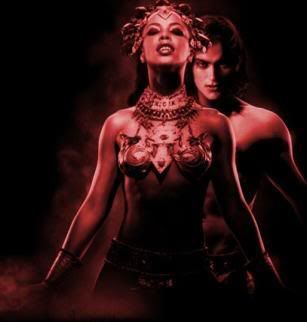Lists: A Salute To 90’s Cinema Bad Boys
The 90’s were a great time for the you if you were young, a boy, and white.
I have always been drawn to films that feature this type of privileged, manipulative young male character who spends the entire film mind fucking all the adults in his world while he orchestrates his own brand of chaos.
I suppose I enjoy imagining what grotesque adult characters they could grow up to be.
I loved Macaulay Culkin’s portrayal of Henry Evans, a precocious psychopath who terrorizes his cousin played by the equally cute (but now scary looking) Elijah Wood.
Almost as interesting as the film is the back story. Macaulay Culkin’s father threatened Fox, which had been saved from financial disaster by the unexpected success of “Home Alone,” by saying he would pull his Mac from “Home Alone 2” if he wasn’t given the image-altering starring role in “The Good Son,” which was about to start shooting. He also made sure his daughter Quinn received a role too, as Henry Evans’ little sister.
At the time, Macaulay Culkin was a bankable star who – at 12 years old – was making over $8 million a picture.
Oh, sequels are never as good as the original!
Michael Oliver charmed me and inspired me to run away from home in his portrayal of Junior, an orphan who is adopted by his dopey but loving dad Ben Healy, played by John Ritter, and his obnoxious wife, Flo (she doesn’t make it to the sequel).
When Junior arrives at the Healy residence he finds a bedroom just for him – filled with clowns.
That alone, in my mind, gave him full justification to wreak havoc for the rest of the film. This film inspired me to start another list called “films with kids who go on joyrides with serial killers”.
Problem Child was Michael Oliver’s big screen debut. Problem Child 2 was the last film he ever starred in and he is best known for the related lawsuit – his manager/mother coerced Universal into renegotiating his contract on the eve of filming Problem Child 2 . Universal owed Oliver $80,000 for his role in the original pic but was forced to pay him $250,000, the jury found, and he was obligated to return the balance.
I would assume the lawsuit explains why Problem Child 2 was his last movie.
The evil little kid in this film is played by Rowan Witt, also known as the “spoon” boy from the Matrix.
I know he doesn’t have a starring role but this movie is sick so I had to mention it.
Oh, Jack Merridew! You personify all that is glorious about the 90’s bad boy.
Masterfully played by Chris Furrh in the second film remake of the literary classic, Jack Merridew
is one of the young military school boys stranded on an island after their plane crashes (clearly, they come from money). After Ralph is elected leader (because he is bigger and kinder), Jack neglects his assigned duty to watch over the fire camp and they all lose a chance to be seen by a helicopter. Instead of being sorry, Jack divides the group and splits leadership, becoming the leader of his own tribe who is responsible for hunting. This positions him as an even greater leader and threat, as now all sources of meat rest in his hands.
Watching Jack devolve into primitivism, using fear to control the other boys, hunting and chasing pigs and then eventually hunting Ralph is something to behold. Not as good as the book, but still worth viewing.
After “Lord of the Flies”, Chris Furrh was never as challenged in a role again. He went on to do a few television roles and hasn’t made a film since.
What other Cinema Bad Boys can you think of? They don’t have to be from the 90’s.





